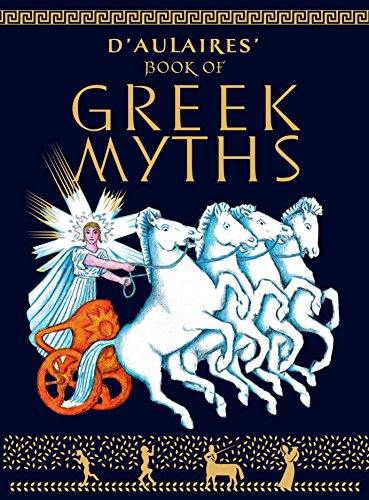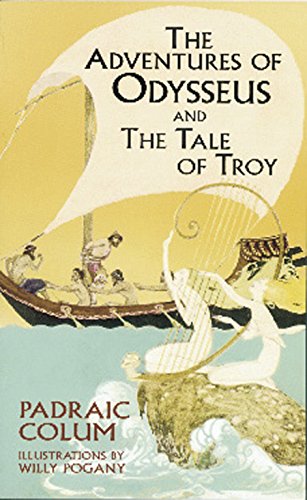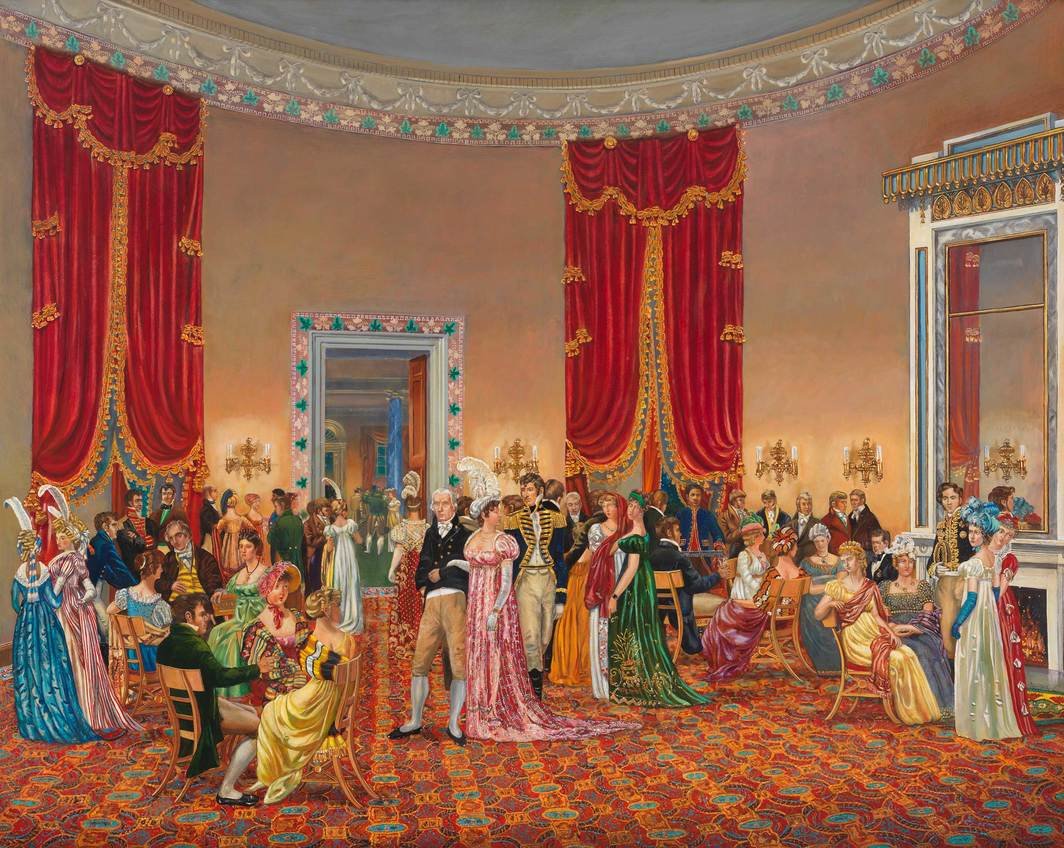The Readaloud Day Guide: A 52-Week Reading List for World Mythology and Folk Tales
Think of mythology as the building blocks for future literature studies — though, admittedly, they can be messy, complicated, ambiguous building blocks. This 52-week reading list is designed to cover a full year of mythology studies, adaptable for students of all ages.
Why mythology? These are the stories that inform our cultural landscape, influencing art, music, literature, and pretty much everything else we encounter on an everyday basis. Think of mythology as the building blocks for future literature studies — though, admittedly, they can be messy, complicated, ambiguous building blocks. This 52-week reading list is designed to cover a full year of mythology studies, and while it’s accessible for elementary students just diving into the wide world of literature, older students looking for a place to start a systematic comparative literature study may also find this a place to begin.
D’Aulaire’s Book of Greek Myths
Greek mythology is the perfect place to start diving into the world’s great myths. For so many of us, these stories — of all-powerful Zeus’s antics, Persephone’s pomegranate seeds, the heroes of the Trojan War — are touchstones that echo throughout western literature and our imaginations. Some of the big problems of mythology — notably rape and violence — are glossed over a bit here; depending on your child, you may want to talk a little about why these dark ideas are softened here.
Black Ships Before Troy
There are several young reader-friendly versions of The Iliad; I like this one because it echoes the jump-around style of the original instead of telling everything around the story of Achilles. For the ancient Greeks, the Trojan War marked a metaphorical line between the Age of Myth and everyday life — the war represented the end of the time of heroes. The Greeks believed that death with honor was better than a long and peaceful life, and the exploits of this war story reflect that hyper-masculine philosophy.
Greek Myths
With superficially simple but deeply complicated stories like world myths, the more versions you can read, the better your understanding will be of the ideas, values, and world views of the people who wrote them. Olivia Coolidge’s slightly old-fashioned take on Greek mythology (it was published in 1949) scrupulously attempts to give space to every god’s story, with an emphasis on drama and adventure. Compare these stories to the D’Aulaires’ to see what changes between retellings.
Percy Jackson and the Olympians: The Lightning Thief
Say what you will about Rick Riordan’s uber-popular series, few middle grades books have made Greek mythology as urgent and fascinating to a modern audience as the adventures of Percy and his friends. By now, the heroes, monsters, and gods of the pantheon will be familiar friends, and kids will love seeing Riordan’s modern-day take on Greek myth.
The Children's Homer: The Adventures of Odysseus and the Tale of Troy
Padraic Colum’s kid-friendly translation captures all the twists and turns of Odysseus’s long journey home, which help set the standard for what an epic journey should look like. Omniscient narrator? Check. Hero who faces death? Check. Geographical and emotional journey? Check. Odysseus’s adventures are interesting enough on their own, but they can also inspire other activities. Draw a map of Odysseus’s voyage, or make a board game based on his adventure.
Tales from the Odyssey
Mary Pope Osborne’s two-part retelling of Odysseus’s story is one of the best. Osborne manages to channel the non-stop excitement of the original (sorcerers! cannibals! shipwrecks!) in a way that’s easy to follow and fun to read. With stories like this that were told for centuries before they were finally written down, reading lots of different versions can be illuminating.
Aesop’s Fables
Aesop’s morality stories were written down in the sixth century B.C.E. and focus on many of the same lessons and ideas that Greece’s mythology hones in on: How should we treat each other? What makes a good leader? How do you deal with bullies? Jerry Pinkney retells more than 60 of Aesop’s best known fables with lush illustrations in a book. Kids may enjoy looking for instances of characters not following Aesop’s advice in other traditional myths.
Tomie dePaola's Book of Bible Stories
The stories of Jonah and the whale, Noah and the flood, Moses and the Pharaoh have influenced Western literature and art in significant ways, and it feels like a disservice to leave them out of your mythology studies. This collection isn’t intentionally secular, but its focus on the stories and characters rather than on religious principles makes it a good option for reading traditional Bible stories in their mythological context.
Usborne Children's Book of Bible Stories
One thing you’ll notice as you read through this collection of stories is how the motifs in them carry over into other literature: The baby floating down the river in a basket, the flood that reshapes the world, the hero who sacrifices himself to save the world — these ideas echo through mythological traditions around the world.
The City of Rainbows: A Tale from Ancient Sumer
As far as writing goes, this isn’t the most eloquent story you’ll ever read — its appeal is in its origin. Author Karen Polinger Foster is an archaeologist, and the story she’s retelling was preserved on clay tablets in ancient Sumeria. The story — of two kings whose different ways of seeing things cause confusion — is a classic folk tale that hints at the importance of the innovation of writing in Mesopotamia.
Gilgamesh the King
Ludmila Zeman focuses on the first part of the epic of Gilgamesh, where the not-so-nice king of Uruk meets his match — and ultimately his best friend — in the wild man Enkidu. Don’t make this the only version of Gilgamesh you read (see below); it’s bowdlerized to be kid-friendly in ways that may well annoy you, but the story is a good introduction to the world’s first epic, and the illustrations — inspired by Babylonian, Assyrian, and Sumerian art — are fantastic.
Gilgamesh the Hero
Once you’ve read the simplified picture-book, dive into this engaging retelling, which starts with Gilgamesh’s friendship with Enkidu but continues to his conflict with the goddess Inara and his (ultimately unsuccessful) quest for immortality after Enkidu’s death. Geraldine McCaughrean softens some of the R-rated elements of the story (including Gilgamesh’s rape culture mentality) without excising them.
Tales of Ancient Egypt
Greek mythology was heavily influenced by the more sophisticated philosophy of their Egyptian neighbors, and this chapter book by Roger Lancelyn Green focuses on the Egyptian pantheon, its heroes, and its ideas of magic and the supernatural. Reading it after you dive into the more popular Greek mythology lets you appreciate all those subtle points of influence that you might miss if you explore Egypt first.
Nelson Mandela's Favorite African Folktales
This collection includes 32 stories from across the continent of Africa — a broad swathe, to be sure, but it’s a vibrant sampler of African storytelling. A map at the beginning highlights the geographic region where each story originates, and you’ll find a mix of creation myths, hero stories, and trickster tales.
Kings, Gods, and Spirits from African Mythology
Jan Knappert retells 35 stories of gods, ghosts, heroes, warriors, tricksters, kings, and animals from the Zulu, Swahili, Bantu, Ashanti, and other African people. There’s no Wakanda, but there is definitely just as much magic in stories like “The Golden Stool” and “The Ogre Who Ate People.” Feel free to skip the less-than-thrilling introduction and cut straight to the stories.
The Star-Bearer: A Creation Myth from Ancient Egypt
Dianne Hofmeyer retells the odd but lovely Heliopolis creation myth, in which golden godchild Atun must separate Geb, god of Earth, and Nut, goddess of the sky, in order to make room for his creations. The story explains the different forces that the Egyptians believed governed their everyday lives: earth, wind, water, and sky.
Treasury of Egyptian Mythology: Classic Stories of Gods, Goddesses, Monsters, and Mortals
It’s surprising how few collections of Egyptian mythology there are compared to other cultures’ mythologies — perhaps it’s the air of weirdness that permeates Egyptian myth. Donna Jo Napoli’s retellings, collected in this book, are a step toward rectifying that omission, preserving the mythic weirdness while relating the stories in a way that resonates with younger readers.
Illustrated Arabian Nights
This luxe Usborne book edited by Alida Massari Anna Milbourne is a softened-for-kids version of the somewhat violent and misogynistic but also fantastic folktales from the Golden Age of Islam. You’ll find plenty of familiar names — Aladdin and his lamp, Sinbad the sailor, Scheherazade the storyteller — as well as more unusual stories.
Angels, Prophets, Rabbis, and Kings from the Stories of the Jewish People
These Jewish tales from the Talmud highlight the power of quick thinking, the benefits of good deeds, the importance of tradition, and the joys of family. Many of these tales date back to the Middle Ages, which makes them more recent than much of the other mythology on this list.
Seasons of Splendor: Tales, Myths and Legends of India
Cookbook author Jaffrey Madhur compiled this collection of Indian myths her mother told her as a child, organized according to the Hindu calendar, including the story of Rahu, the evil star who punishes the moon with an annual eclipse for trying to interfere in one of his nefarious schemes.
The Gita for Children
Roopa Pai tackles one of the most philosophically interesting conversations in mythological history, between Pandava prince Arjuna and his chariot driver, the god Krishna. This simplified version works on its own as a story, but layers of meaning are waiting to unpack with willing readers.
The Boys Who Fought: The Mahabharata for Children
The Mahabharata is one of India’s great epics, a complicated story about the Kuruksetra War between the wealthy Kauravas and their poor cousins the Pandavas. Devdutt Pattanaik retells the story in a simplified, comic book form, illuminating the ideas of dharma and karma in a kid-accessible way.
The Girl Who Chose: A New Way Of Narrating the Ramayana
Keep going with Devdutt Pattanaik’s take on India’s other great epic, the Ramayana, the story of Prince Rama’s quest to rescue his wife the Princess Sita from Ravana who has used an army of monkeys to kidnap her. Despite what the title suggests, this book isn’t a feminist take on the not-very-feminist story, but it does underscore the significance of choices in destiny.
Rama and The Demon King
Jessica Souhami takes an even simpler approach to the Ramayana in this picture book, which focuses on Rama’s battle with the ten-headed king of demons. The shadow puppet-style illustrations, following the traditional Indian art form, illuminate the story of Prince Rama’s life in the forest, which turns deadly when a demon vows revenge against him.
Amma Tell Me About Durga Puja
Bhakti Mathur does get some girl power going in this story about the mother goddess Durga who defeats the evil, shape-shifting, sneaky demon Mahishasura. The gods team up to create a super-powered ultra goddess, the only hero who can defeat this particularly villainous demon.
Aru Shah and the End of Time
It’s no surprise that the first book in Rick Riordan’s new Disney imprint features a hero who discovers she’s descended from a mythic hero — the twist is that 12-year-old Aru’s mythic heritage comes from Indian mythology. When she accidentally sets a sinister supernatural spirit free, she must channel her inner Pandava and discover the world of Indian myth lurking at the edges of the world she’s always known.
D’Aulaire’s Book of Norse Myths
Just as with Greek mythology, the D’Aulaires offer the perfect starting point for a deep dive into Norse mythology. (And just as with Greek mythology, this isn’t always easy because some of the original stories have dark and violent undertones.) From Odin the All-Father to Thor and his hammer to the great battle of Ragnarokk, these beautifully illustrated stories are a great introduction to the fantastic — if fatalistic — Norse pantheon.
Norse Mythology
Neil Gaiman definitely dives into the salty side of the Norse pantheon, so you may want to skim ahead to make sure you’re comfortable with the content — it’s totally consistent with the bawdy, violent world of Asgard, and Gaiman fully appreciates all the weird, wild antics of Norse mythology.
The Children of Odin: The Book of Northern Myths
Padraic Colum paints a fairy tale picture of life in Asgard once upon a time, emphasizing the fantastic elements of life in the world of the Norse gods.
Odd and the Frost Giants
Gaiman returns to Norse mythology with an invented story of a lonely boy who finds himself on a quest for the gods. Chris Riddell’s deliberate, slightly eccentric illustrations illuminate the story’s fairy tale nuance, while the story itself is steeped in Scandinavian myth.
Eight Days of Luke
Diana Wynne Jones beat Neil Gaiman to the punch by imagining a world peopled by undercover Norse gods and an ordinary boy who finds himself in the middle of an adventure he never anticipated. This is the perfect Wynne Jones mix of quotidian British life and high fantasy, but you’ll definitely want to save it for when you’re familiar with the fundamentals of the Norse pantheon — half the fun is identifying the secret identities of the different characters who crop up on David’s adventure.
Essential Chinese Mythology: Stories That Change the World
This collection of Chinese myth includes tales from Buddhist, Daoist, and Confucian mythology and offers a fascinating glimpse into a world of ideas that both parallels and sharply departs from the Western traditions we know so well.
The Eight Immortals of Taoism: Legends and Fables of Popular Taoism
Daoist mythology is a compelling combination of historical figures and supernatural forces, and these stories are a good introduction. The eight immortals are a surprisingly (and pleasantly) diverse group, including a woman, a student, a person who is physically disabled, and an androgynous hero.
The Emperor and the Kite
Little Princess Djeow never gets any attention, but her kite-flying skills save the day when her father is kidnapped and imprisoned in a tall tower. Djeow’s skill, persistence, and clever thinking earn her family’s respect in this not-so-traditional princess story.
Yeh-Shen: A Cinderella Story from China
In this early Chinese Cinderella story, you’ll find a fish instead of a fairy godmother but otherwise the same jealous stepfamily, royal ball, magical shoes, and the happy ending.
The Great Race: The Story of the Chinese Zodiac
The Chinese zodiac is full of animals — but plenty also get left out. This playful tale tells the story of how the rat cheated the cat out of a victory in the Jade Emperor’s great river swimming race — and a spot in the zodiac.
Treasury of Chinese Folk Tales
My favorite part of this eclectic collection of Chinese stories is that Shelly Fu and Patrick Yee give the historical and cultural context for each one.
Where the Mountain Meets the Moon
Grace Lin’s quest novel takes its magic from the Chinese myths and folk tales she grew up with, and the result is a delightful fantasy steeped in Chinese mythic tradition.
Tales Our Abuelitas Told: A Hispanic Folktale Collection
The tales in this collection reflect the diversity of the Hispanic world: Some are indigenous stories told by Latin American tribes, others come from Basque and the Middle East. Playful, chatty, and engaging, this is a lively introduction to some of the stories that have shaped Latinx culture around the world.
Hawaiian Myths of Earth, Sea and Sky
Vivian Thompson explores ten foundational Polynesian myths, focusing on the central core that runs through the islands’ mythological diversity. You’ll find strong parallels between the landmark-focused stories in these myths and those in Native American mythology.
Between Earth and Sky: Legends of Native American Sacred Places
Abenaki poet and author Joseph Bruchac tells the stories of ten spaces with sacred connections for various Native American tribes, including the Seneca story of Ne-ah-ga (Niagara Falls), to emphasize that all natural places are sacred spaces.
The Mud Pony
In this tale from the Skidi branch of the Pawnee Indians of the Plains, a boy must find his own strength after his sculpted mud pony — miraculously brought to life — returns to earth.
Raven: A Trickster Tale from the Pacific Northwest
This story from the Pacific Northwest people may remind you of the Prometheus myth: Feeling sorry for people trapped in the world’s eternal darkness, trickster Raven sneaks into the Sky Chief’s house to steal his light and warmth for the rest of the world.
How the Stars Fell into the Sky
In Navajo tradition, the chaos of the stars in the night sky reflects the chaos of life — and it’s no surprise that this starry chaos was caused in part by the trickster Coyote. First Woman patiently crafts a mosaic of laws in the sky, but impatient Coyote messes up her careful work, bringing chaos into the world.
Rabbit’s Snow Dance
The Bruchac pere et fils bring a much-needed jolt of charm and energy to this Iroquois fable about a rabbit who just can’t wait for snow — even though it’s the middle of summer. Compare this to the story of Pandora.
The Legend of the Bluebonnet
The theme of sacrifice in this Comanche folk tale will feel familiar after reading so many other myths: When She-Who-Is-Alone learns that the drought destroying her community is caused by the Great Spirit, who is angry with the Comanche for taking from the land without giving back, she understands that only a burnt offering of her most precious possession can save her people.
How Chipmunk Got His Stripes
This pourquoi story (or origin story) from East Coast Native American tradition isn’t particularly surprising, but the telling makes it feel that way: Brown Squirrel and Bear learn a lesson about bragging and teasing, and the chipmunk is created when Bear boasts that he can keep the sun from rising. It’s worth comparing this to some of the Greek origin stories.
Big Turtle
In this Huron-Iroquois creation story, Sky Girl is trapped between the water and the sky, and while she rides on the back of the Big Turtle, a series of animals attempt to bring enough earth from the bottom of the sea to give her a place to live. Little Toad succeeds, and Sky Girl’s descendants become Earth’s first people.
The Sun’s Daughter
You’ll be amazed by how much this Iroquois legend of the Corn Maiden reminds you of the story of Persephone and Demeter: When Maize slips away from her mother Sun to walk at night, she’s captured by the moon Silver. Just as in the Persephone myth, the resulting shared custody explains the origin of the seasons.
Kokopelli: Drum in Belly
It’s hard not to love Kokopelli, the fertility god musician who appears in the traditions of some Native American cultures in the Southwestern United States. In this origin tale, Kokopelli uses his music to lead the Ant People out of the Dark World and into the Green World, where they become the first people.
Arrow to the Sun: A Pueblo Indian Tale
The pattern of this tale set among the Pueblo people matches up to other traditional stories of virgin-born heroes who must face a series of trials, but the really interesting thing about it is how it represents a western mythology being superimposed on another culture. In fact, in Pueblo culture, illegitimate children are treated the same as other children, and the kivas are places of community, not of trial. Why would the author create a Western version of a Pueblo tale? This is a longstanding problem in telling the mythology of other people, and it’s one that after all the rest of your reading, you’re ready to tackle together.
Favorite Folktales from Around the World
Jane Yolen collects tales of tricksters, creation, the end of the world, and more in this collection of tales from Syria, Estonia, Peru, Haiti, and more countries whose mythological and folklore traditions may be less well known.
(We’re Amazon affiliates, so if you purchase something through an Amazon link, we may receive a small percentage of the sale. Obviously this doesn’t influence what we recommend, and we link to places other than Amazon.) This book list was originally published in the spring 2018 issue of HSL.






































































AMY SHARONY is the founder and editor-in-chief of home | school | life magazine. She's a pretty nice person until someone starts pluralizing things with apostrophes, but then all bets are off.